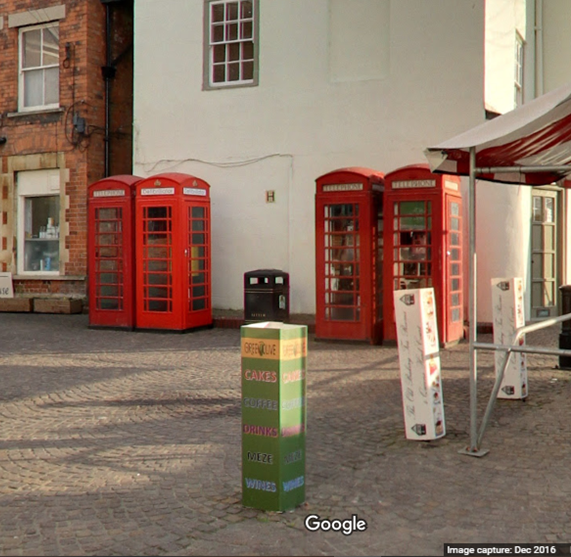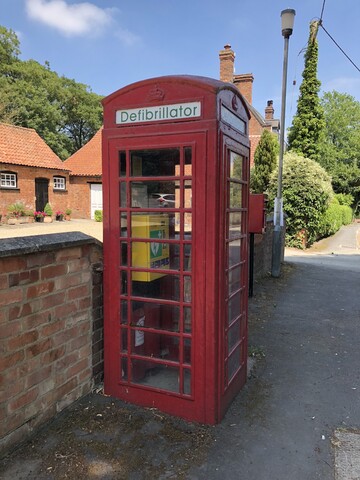K6 Telephone Kiosks
- Posted in:
- Heritage
The iconic K6 telephone kiosk, more commonly known as the red telephone box, dates to 1935. It was designed by the famous British Architect, Sir Giles Gilbert Scott, to commemorate the Silver Jubilee of the coronation of King George V.
The K6 was the first telephone kiosk to be employed extensively outside of London. It was made from four cast-iron sections, bolted together and installed on a concrete base. Three of the sides, which included the teak door frame, were glazed with eight rows of three panes of glass windows, in a decorative mould surround. The ‘telephone’ sign at the top was illuminated. The domed roof incorporated a moulded royal crown representing the current monarch at the time of installation. Three crowns can be found on K6 kiosks: King George V, King George VI and Queen Elizabeth II. The standardised paint colour is ‘currant red’.

Above: An iconic K6 Kiosk at Maythorne Mill. Check out the HER record here.
By 1968, 60,000 original K6 kiosks had been installed by the General Post Office, making them a familiar sight throughout Britain. Ordinary homes did not have a landline until the 1950/60s, so public telephone boxes were vital for communications. They were sited in the main areas where people would pass by, often close to road junctions. In high footfall areas such as the marketplaces at Newark and Bingham, pairs of kiosks were installed.

Above: Two pairs of K6 kiosks at the Market Place, Newark. Google Image. Check out the HER record here.
In the 1980/90s K6 kiosks began to disappear as they were replaced with a more modern design. The introduction of mobile phones in the 1990s, made telephone boxes virtually redundant, and many more disappeared from the street scene. In 2017/18, British Telecom wrote to councils offering them the option to purchase redundant K6 kiosks in their area for just £1. Many were purchased and repurposed by councils and community groups for a range of uses. In Nottinghamshire, K6 boxes are commonly used to house defibrillators and book exchanges. One in Ravenshead has become a floral display, while others have been incorporated into museums and public places (Newark Air Museum). Some can even be spotted in domestic properties where they are sited as garden features.

Above: K6 Kiosk now houses a defibrillator adjacent to Martins Arms Public House, in Colston. Check the HER record here.
In 2022, it was estimated that 11,700 K6 kiosks remained. As one of the most recognisable symbols of 20th-century British design, Historic England considers the best-surviving K6s to be an important part of our national heritage. So far, almost 2,500 have been Grade II listed. 38 of these are in Nottinghamshire. You can find out which ones, by entering 'K6' in the search bar of our website here.
These listed examples serve as reminders of the era when phone boxes were an essential part of communities across Britain. The iconic design of these modest yet striking structures has secured their place in our national heritage.
